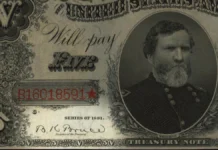Norway, Ireland, Poland and Sweden are just a few examples of countries who have placed the winner of the Nobel Prize in Literature on their banknotes
By Paper Money Guaranty (PMG) ……
The Nobel Prize is undoubtedly one of the most prestigious awards in the world. Since its establishment in 1895, many deserving candidates have been awarded the prize for accomplishments in chemistry, literature, peace, physics and physiology or medicine. The countries who claim these winners are proud of their native sons and daughters, and some have immortalized these individuals on currency. In this article, we will focus on the winners of the Nobel Prize in Literature.
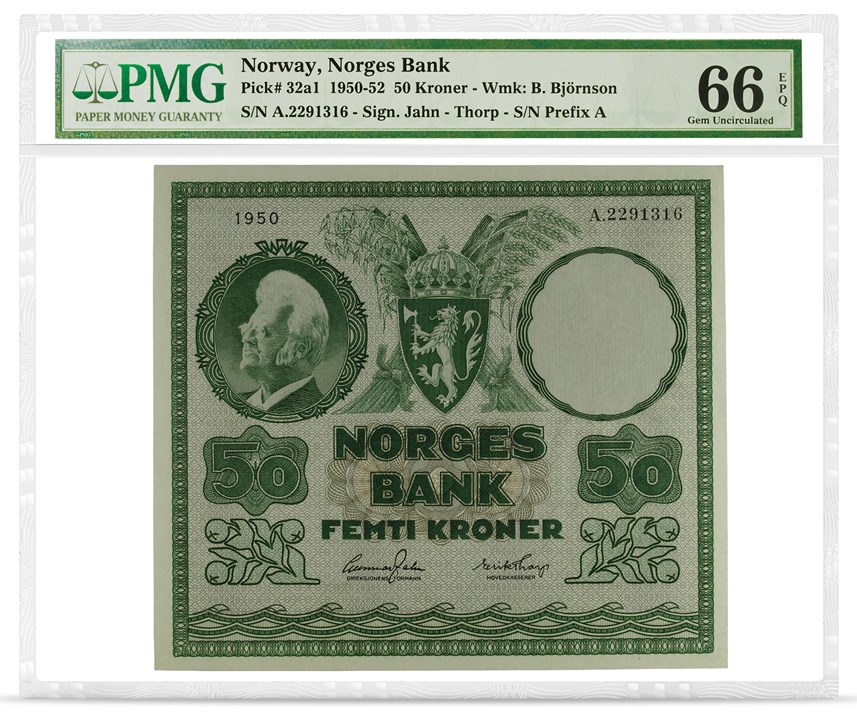
Norway, Norges Bank, Pick# 32a1, 1950-52, 50 Kroner, front. PMG graded 66 Gem Uncirculated EPQ

Norway, Norges Bank, Pick# 32a1, 1950-52, 50 Kroner, back
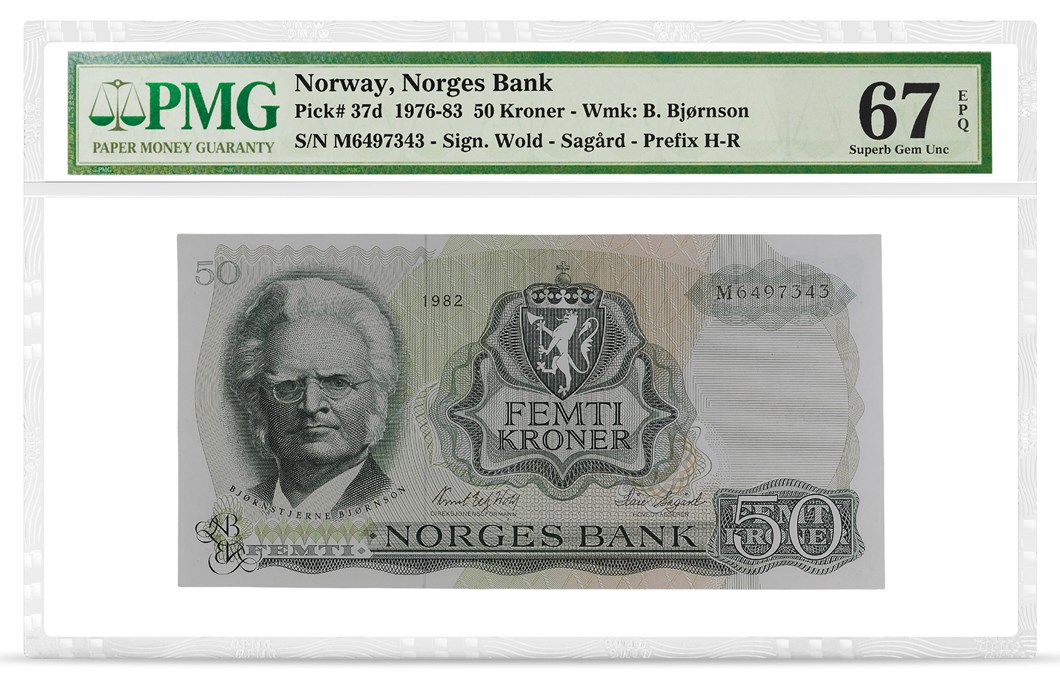
Norway, Norges Bank, Pick# 37d, 1976-83, 50 Kroner, front. PMG graded 67 Superb Gem Uncirculated EPQ
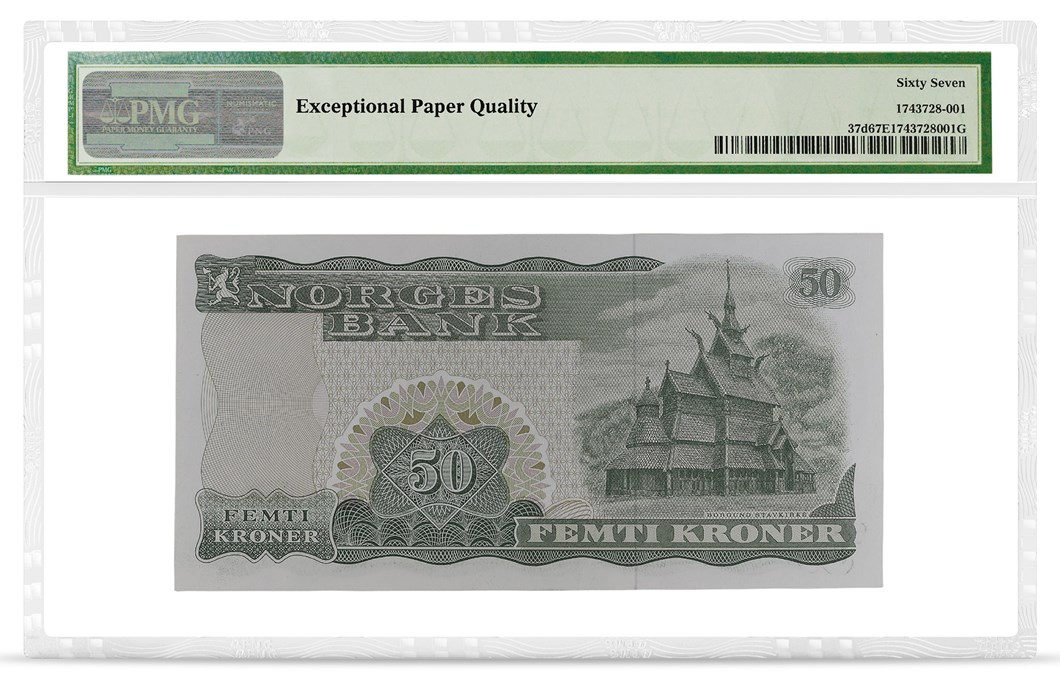
Norway, Norges Bank, Pick# 37d, 1976-83, 50 Kroner, back
Norway was the first country to feature a Nobel Prize winner on its currency, with their 1950 series 50 Kroner note. The Nobel Prize winner featured on the note was writer Bjørnstjerne Bjørnson, who won the prize in 1903. In fact, Bjørnson served on the inaugural Nobel Prize committee from 1901 to 1905, which indicates his reputation on the world stage. Bjørnson wrote poetry, novels, plays, even contributing lyrics for the Norwegian national anthem.
The initial banknote featuring Bjørnson was in circulation from 1950 to 1965. A second banknote was issued in 1966 as part of a general redesign of all Norwegian notes, and was in circulation until 1999.
For the first note, PMG has graded three examples of Norway 32a1 and two examples each of Norway 32b2 and Norway 32s at 66 EPQ, among 35 total notes in the population. The second note has been graded as high as 67 EPQ, with one example from Norway 37b, Norway 37c and Norway 37d among 99 total notes in the population.
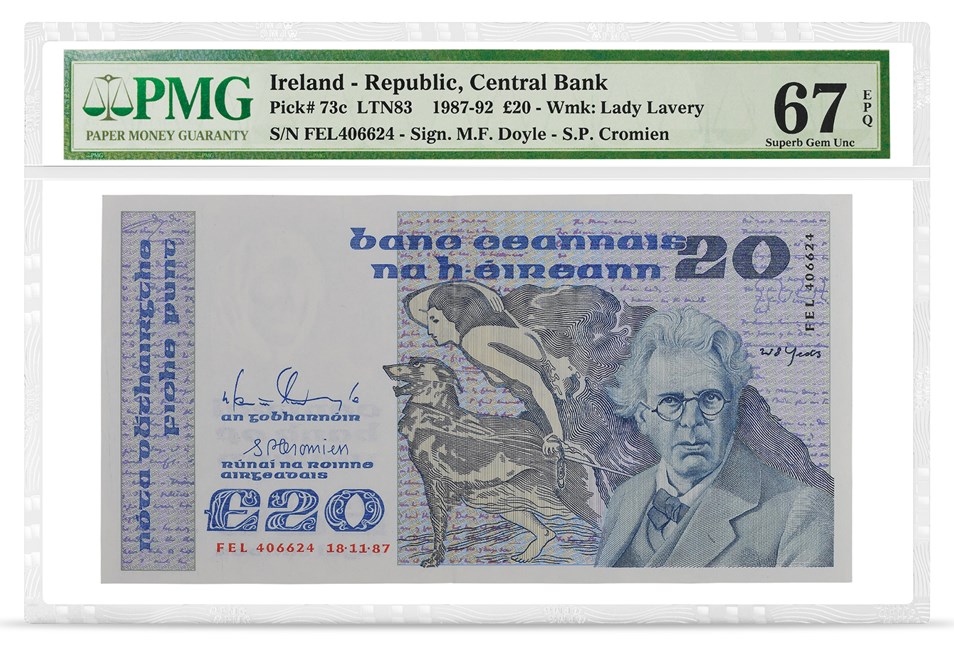
Ireland – Republic, Central Bank, Pick# 73c, 1987-92, £20, front. PMG graded 67 Superb Gem Uncirculated EPQ
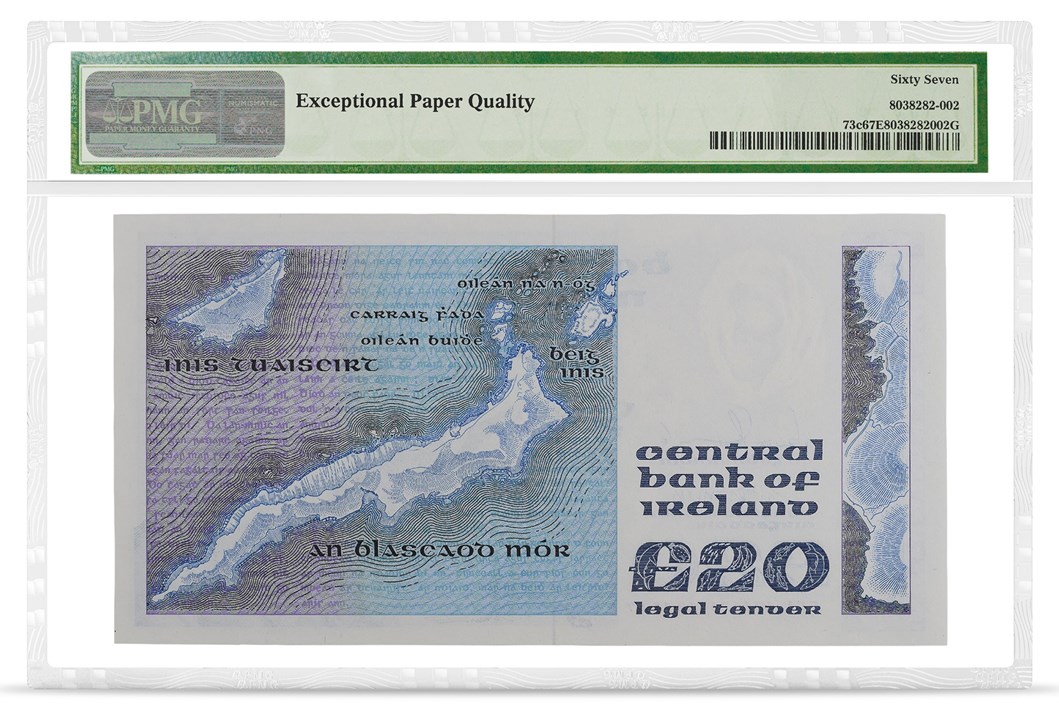
Ireland – Republic, Central Bank, Pick# 73c, 1987-92, £20, back
Irish poet William Butler Yeats is the next Nobel Prize winner to be featured, having won in 1923. He appeared on the £20 note, which circulated from 1980 to 1992 as part of the Central Bank of Ireland’s new “History of Ireland” series. Yeats was known for his use of symbolism, and while known as a Modernist, eschewed the movement’s use of free verse in structuring his works, instead using traditional forms. Yeats is also known as one of the cofounders of the Abbey Theatre in Dublin. In fact, the motif used by the theatre appears on the banknote behind Yeats in the form of mythological hero Cú Chulainn.
PMG has graded four examples of this note at 67 EPQ, three examples of Ireland 73b and one example of Ireland 73c, among 59 notes in the population.
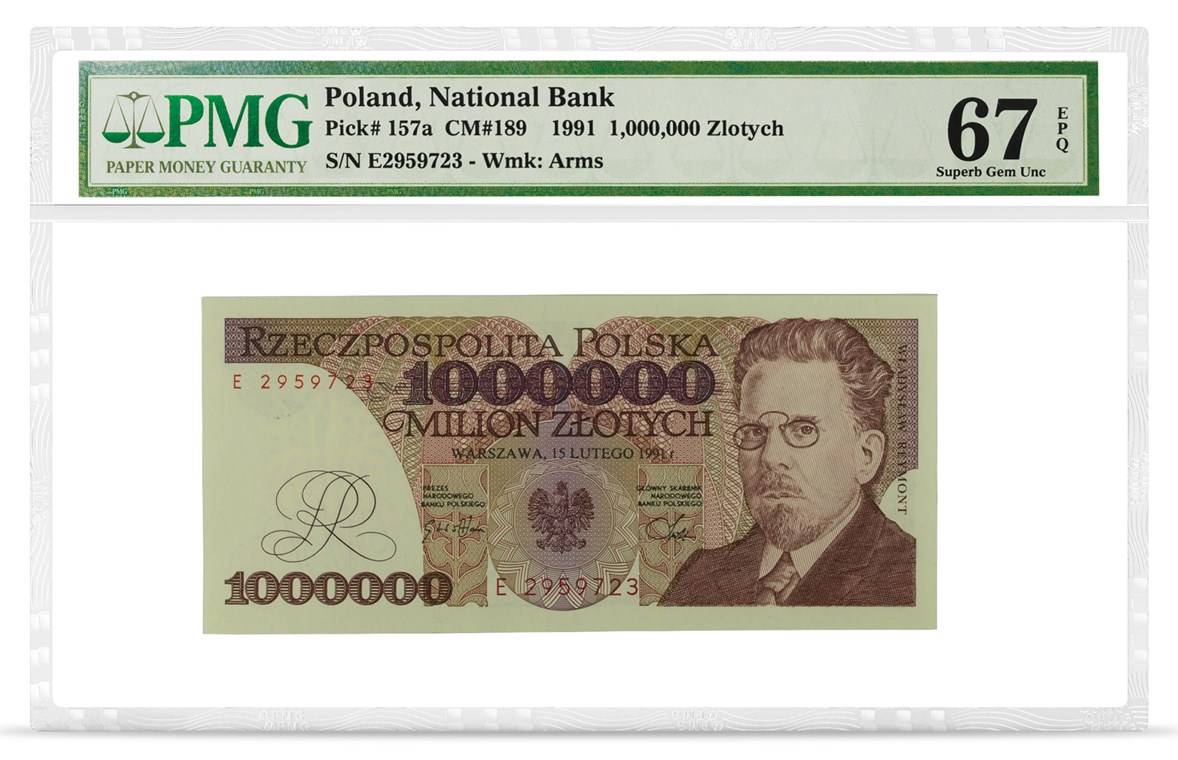
Poland, National Bank, Pick# 157a, 1991, 1,000,000 Zlotych, front. PMG graded 67 Superb Gem Uncirculated EPQ
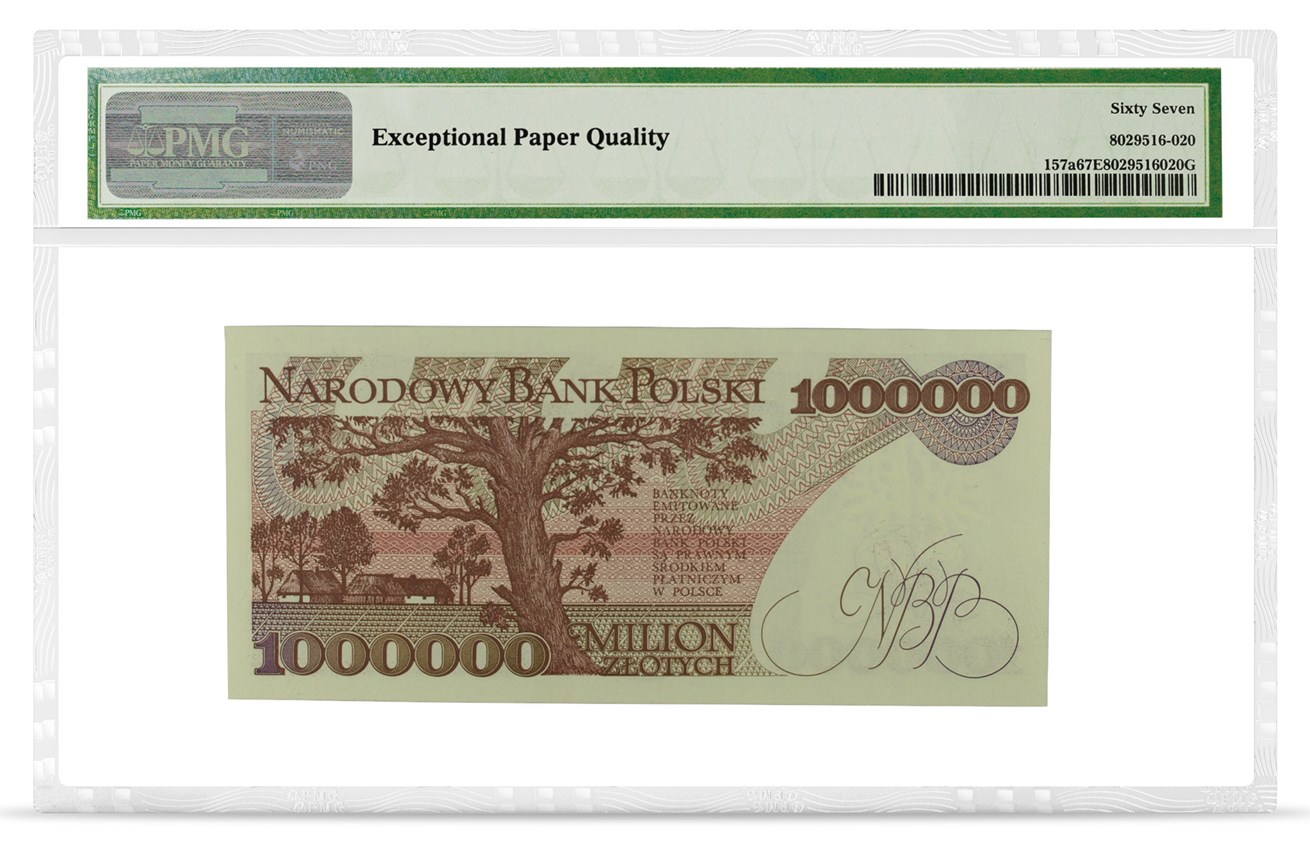
Poland, National Bank, Pick# 157a, 1991, 1,000,000 Zlotych, back
Polish novelist Władysław Reymont won the Nobel Prize for Literature in 1924, and appeared on the 1,000,000 Złotych note. Reymont wrote the novel Chłopi (The Peasants, 1904-9), which was published in four volumes from 1904 to 1909. Reymont was interested in the relationship between humanity and nature, so each volume focused on a season in a village. Reymont wrote in a naturalistic style, and wrote the novel in the local Łowicz dialect, all the while observing the customs and behavior of the villagers.2
Two notes were issued with Reymont’s portrait, one dated as 1991, and the second as 1993, although the latter note was actually issued in 1994. The notes feature Reymont as well as a rural scene on the back befitting Reymont’s works. Both notes were in circulation until 2010.
For the first note, Poland 157, PMG has graded two notes at 67 EPQ among 56 total notes in the population. The second note, Poland 162, has also been graded as high as 67 EPQ, with 13 notes at this grade among 74 total notes in the population.

Sweden, Sveriges Riksbank, Pick# 61a, 1991-92, 20 Kronor, front. PMG graded 68 Superb Gem Uncirculated EPQ
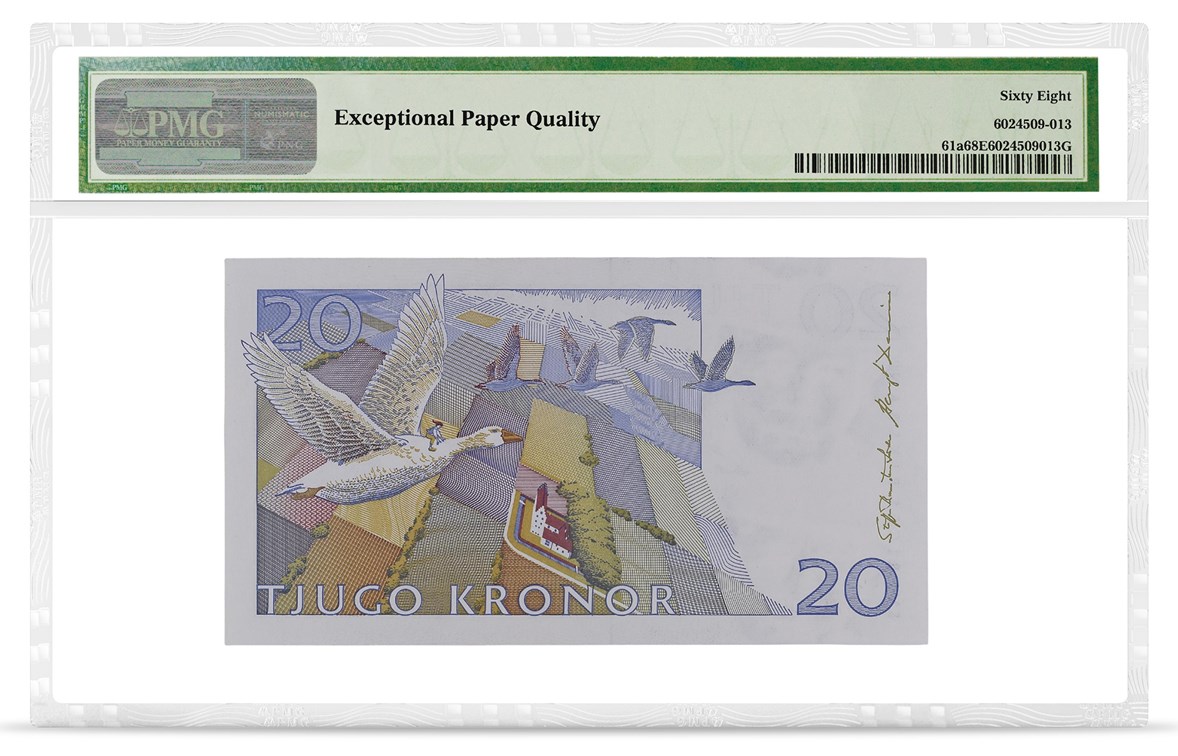
Sweden, Sveriges Riksbank, Pick# 61a, 1991-92, 20 Kronor, back
Swedish author Selma Lagerlöf won the Nobel Prize for Literature in 1909, and was the first female writer to receive such an honor. Lagerlöf appeared on the National Bank’s first 20 Kronor banknote, another milestone for the author. Lagerlöf was a romanticist who rebelled against the realism that pervaded literature at the time. She was fascinated with folklore, which was evident in novels such as Gösta Berling’s Saga (1891) and The Wonderful Adventures of Nils (1906-7).
Lagerlöf appeared on two notes, one with a blue-gray tint, and another with a purple tint. The first note was in circulation from 1991 to 1995, and the second was in circulation from 2004 to 2008. Both notes feature Lagerlöf on the front, with a scene from her children’s book The Wonderful Adventures of Nils on the back.
For the first note, PMG has graded two notes, both Sweden 61a, at 68 EPQ among 17 total notes in the population. The second note has been graded as high as 68 EPQ, with one note, Sweden 63c, at this grade among 17 total notes in the population.
The writers featured in this article have all contributed to the rich tradition of literature, and their Nobel Prizes are reflections of their achievements. These esteemed few are an ideal choice for a registry set, as there are 20 Nobel Prize winners, and they can be collected by category, or as a whole.
* * *
PMG is an independent member of the Certified Collectibles Group (CCG).




